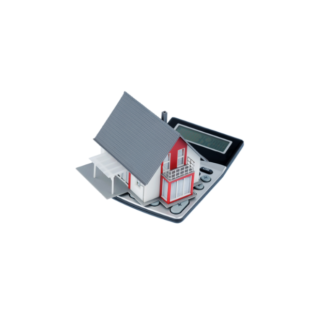The development plan stipulates the type and extent of the development of a property and thus has a significant influence on the building project. However, development plans are often very technical and it is not uncommon for laypersons to find it difficult to understand the plan correctly. This article is intended to change that: An explanation of the most important formulas, terms and abbreviations, for the necessary security when reading the development plan!
the essentials in brief
The permitted uses and regulations on the construction method, spacing areas, etc. are explained in the building use ordinance, while the plan sign ordinance explains the signatures, colors and lines used.Dimensions and parameters such as the number of full floors, the number of floor areas, the number of floor areas or the number of building masses make important statements regarding the permissible height, area and volume of your house.
The development plan contains not only regulations regarding the buildings, but also statements on the size, location and design of the open spaces on the property.
The plan sign regulation – hieroglyphs with system
The scale : The scale indicates the ratio of a defined length on the plan to its correspondence in nature. A scale of 1:500 means that 1cm on the plan corresponds to 500cm or 5m in reality.
Development plans contain numerous markings in the form of lines, letters and numbers. Anyone who has ever looked at such a plan has probably realized that it is not necessarily self-explanatory. In order to be able to “read” and understand a development plan correctly, it is advisable to take a look at the Building Utilization Ordinance (BauNVO) and the Plan Sign Ordinance (PlanZV) . The former determines which uses are permitted in the respective area and how the regulations on construction, clearance areas, etc. are to be interpreted. In contrast, the signatures, colors and lines used are standardized and explained in the plan sign regulation. This ensures that the B plans are generally legible. In this article we explain relevant values and possible symbols that you might encounter when looking at a development plan.
However, the signs and symbols sometimes differ from state to state. As a rule, the plan drawings are created on a scale of 1:500, for larger plan areas also 1:1000 to 1:2500.
Type of structural use
The type of structural use determines which uses are permitted in an area. In addition to residential, mixed and commercial areas, there are also various special areas and zones.
W residential area
WB: Special residential areas (mainly residential, but also commercial operations compatible with residential)
MI: Mixed areas (e.g. residential and commercial establishments that do not significantly disturb living)
Degree of structural use
There are several dimensions and parameters that make statements about the permissible height, area and volume of the house.
Number of storeys: The number of storeys allowed is given in Roman numerals. “II” means, for example, that the building on the property may have a maximum of two full storeys. If the number is in a circle, this means that this number of floors must be observed, i.e. that a two-storey house must be built.
Base area number (GRZ): The base area number prescribes the structural usability of the property area. For example, a GRZ of 0.3 means that a maximum of 30% of the property may be built on. If the property is 300m², the floor area of the house may therefore take up a maximum of 90m².
Floor area ratio (GFZ): The intensity of land use determines the floor area ratio. It is a measure of the structural use of a property. With a GFZ of 0.6, the area of all full floors together may amount to a maximum of 60% of the property area.
Building mass number (BMZ): The building mass number indicates how many m³ of building mass (BM) are permitted per m² of property.
Distance areas: Buildings must maintain a minimum distance to the neighboring property. A rule of thumb for calculating this distance area is: the outer wall height of the planned building multiplied by a value between 0.4 and 1. The exact distance regulations can be found in the respective state building codes.
Buildable area: 90m 2
Land area: 300m 2 , GRZ = 0.3
Usable area: ground floor 90m 2 + 1st floor 90m 2 = 180m 2
Sample calculation 1
So how tall and big can my house be on a 300m2 property in floor class II, with a GRZ of 0.3 and a GFZ of 0.6?
Formula:
Plot size x GRZ = permissible buildable area
Property size x GFZ = maximum floor area
Calculation:
300 x 0.3 = 90
300 x 0.6 = 180
Taking floor class II into account, my house may therefore have two full floors of 90m2 each (a total floor area of 180m2).
Sample calculation 2
There is a simple formula for calculating the permissible building mass: Property size x building mass number (BMZ) = permissible building mass (BM)
For example, if the property is 1000m² and the building mass number in the development plan is 0.8, then the permissible building mass is 800 m³.
Construction, lines and borders
Basically, a distinction can be made between an open (o) and a closed (g) design . If an open design is specified, both single (E) and double (D) as well as terraced houses (R) can be built on the property. However, these must not exceed a total length of 50m. Exceptions apply to garages and carports. With a closed construction, the houses must be built on the property in such a way that the lateral outer walls of the buildings touch.
There are many different lines in the development plan. They designate the property boundary , the building boundaries and the building line . The latter two are easy to confuse optically: the building line is the line that must not be crossed with the building. The building line, on the other hand, is a line that must be touched by one side of the building, i.e. the line on which an outer wall must be built. (Read here where you can build on the property: The land area that can be built on.)
Other key figures in the development plan:
In addition to all this information and dimensions, the development plan also contains the parcel numbers for identifying the individual properties. In special cases, one can also read off a building encumbrance for individual plots of land. For example, encumbrances denote access rights from neighbors who must cross the property to get to their own home. There are also often specifications for the height and design of the roofs. The ridge height (FH) is the maximum allowable distance (in meters) between the roof ridge and the ground. The eaves height (TH ) indicates the maximum allowable distance (in meters) between the eaves and the ground.
The eaves
The drip edge on the roof of a building is called the eaves, or eaves for short. Since all the water collected on the roof surface drains off here, it is often equipped with a gutter. The eaves form the lower boundary of a sloping roof surface.
Another possible specification relates to the roof pitch (in degrees), which depends on the shape of the roof, which is also often specified. Other roof specifications include the alignment of the roof ridge or the material of the roof covering.
The roof ridge
The roof ridge, or ridge for short, is the upper, mostly horizontal edge of a gabled roof or other roof shape. So it forms the upper limit of a sloping roof surface.
But not only the houses are strictly regulated in the development plan, the planning instrument also contains specifications for planting. In this regard, a distinction is made between specifications for the maintenance and establishment of trees, shrubs or other plantings.
The range of possible specifications and guideline values in the development plan is large. Therefore, despite existing basic knowledge of the central content, it is often necessary to take a look at the plan sign ordinance in order to actually decipher all the information correctly. Before you really understand what the development plan wants to tell you, you shouldn’t touch the cement.
Development plan Symbols and values from A to H again for an overview:
A: Type of structural use
B: Base area index
C: Maximum allowable eaves height
D: Approved house types (single or semi-detached house)
E: Number of allowable storeys
F: Floor area count
G: Maximum allowable ridge height
H: Permissible roof shapes




